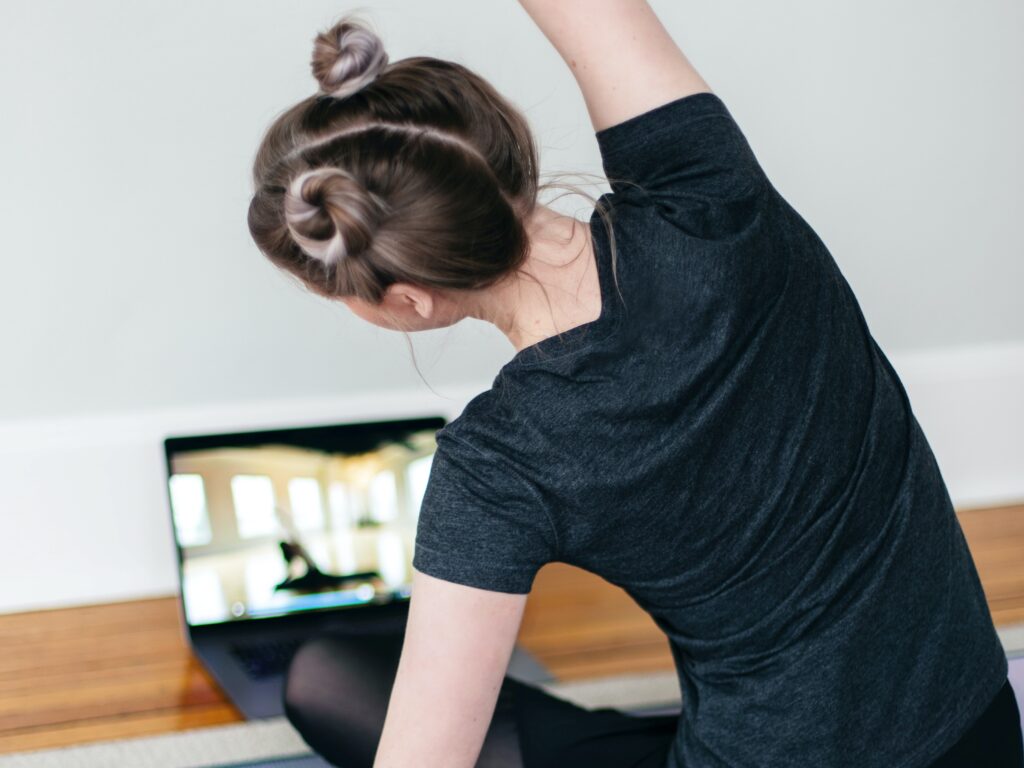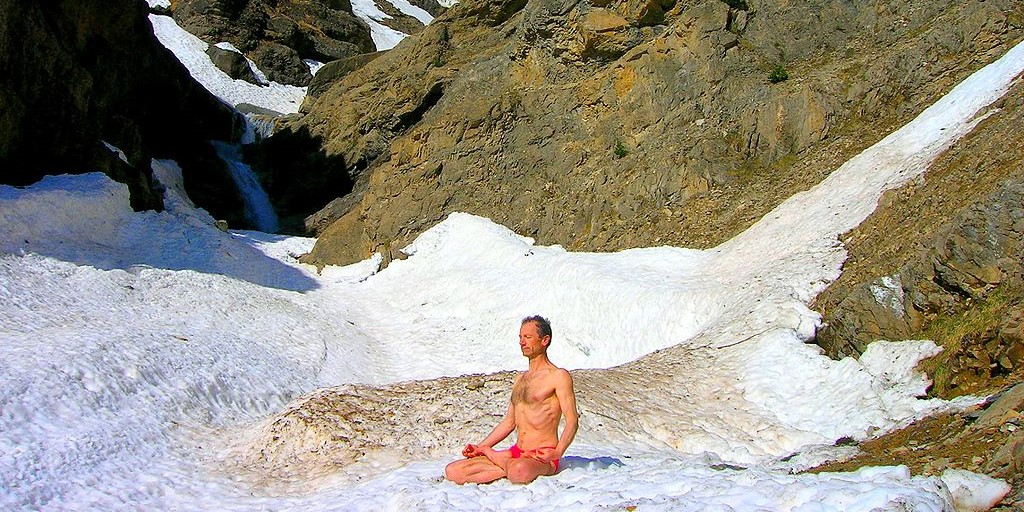We learn everything that we do in life. We learn to eat with our mouths. We learn to walk. We learn professional skills. Maybe performing arts. Management… you get the idea. For anything that we think we have to do, we learn – and practice. Only to realize that life can continue even without it!
But there’s one thing that we have to do – else life will strictly not continue. And our only formal training around this has been a whack on the bum. You guessed it… it is Breathing!
This article aims to familiarize you with everything you need to practice around the subject of breathing. First things first, you must know that the right way to breathe is the way the baby breathes. How is that? When breathing in, the belly comes out… and when breathing out, the belly goes in. And why is that right? Because when we inhale fully into the lungs, our diaphragm is pressed down and – since there is no ribcage over the belly – the belly expands outwards. And what if you breathe and the belly stays flat? Well, that only indicates that you’re fooling your lungs into believing that they have a smaller space to fill. You breathe shallow… and that invites a lot of health trouble in future, but that’s another story.
Once you’re breathing right, in my experience, of learning from various Vedic gurus, Tibetan Lamas, Chinese, Japanese, and Western masters, there are only 6 attributes that determine everything about how your breath serves you. It can serve you not only for the obvious purpose of sustenance, but for healing, rejuvenation, and alchemy as well. As you read through, these aspects will become clearer. The links within, open explanatory videos/sites in new tabs for your reading convenience. Enjoy!
Quality
The act of breathing is one in which we interface with the energy around us. Vedic practitioners call breath ‘prana’ – or life. In Mandarin it is understood as life-force energy, or Qi. In Japanese, it is Ki (as in Rei-Ki; universal life-force energy). Given this, since the air we take in is life-sustaining, it will seem obvious that the quality of air around us is critical for our life sustenance.
In other words, if our ambient air is foul, our health will be foul. We will start getting tired, and feel weak, faster. We will fall ill more often. We will face headaches and have various other early signs of stress needlessly. In today’s world of the remote working environment, we have the option to move away from polluted surroundings into one that offers fresh air and natural greenery… let’s use it!
Quantity
As you are aware, oxygen is what our lungs process, and when we are unable to suck in as much oxygen as necessary, we are required to take it in by artificial means (like oxygen cylinders). Not doing so results in lower saturation of oxygen in our blood and that could result in breathlessness, fainting and even death. Are there other ways of increasing the quantity? Evidently yes.
Madam Gou Lin invented the Qigong Walk in the early 1970s, which has proven to increase oxygenation of cells – leading to reversal of cancer in addition to healing of numerous other varieties of diseases. A yogic exercise that serves a similar purpose is the Lion’s breath. When you see the linked video (especially minute 1:40 to 2:05), you will realize that this is what dogs do after a run. Why? Because they know they need more oxygen in their bloodstream! We too, know these hacks intuitively, but have been conditioned by modern education to shun basic intuition to run our lives.
Physicality
How we sit, stand, walk, place our feet, hands, torso… all of these have an effect on the form of airstream that passes through our body. When we are at a computer for long hours, instinctively we feel like stretching outwards, perhaps with a yawn. What are we doing here? We’re stretching the front of our lungs as we inhale into them because they had been compressed (needlessly) as we hunched over our computer! We’re compensating the lung capillaries for their reduced oxygenation.

Similarly, when we do the Qigong walk referred to earlier, we deliberately move the torso left and right, so that the lungs stretch alternately and help to double the oxygen intake with each breath.
While these examples directly impact the quantity of air we process, there are techniques in prana-yama (literally, breath-control) which can alter our internal energies as well. For example, the way we move air through our nose, mouth, and visualized channels can have a profound effect on cleaning our internal energies as you can experience through this exercise set by one of my teachers.
How often and how much we open our mouths while inhaling or exhaling are other aspects of physicality well with our control and experimentation. The Sheetali Pranayama for instance provides a quick solution to anger, hot flashes, sweating, worry, hypertension, palpitation, irritability… because of the cooling effect it provides within just a few breaths.
And how we deal with our abdomen and neck/throat for hold and release can purify our lungs and make them stronger with the Bhastrika technique. Systematic deep breathing can also result in weight loss.
Mentality
The mind and our energy are linked like a dog and a leash. Without the leash of energy, the mind can wander anywhere… that is its nature. The trained mind on the other hand, is like a well-behaved dog, who never bothers its owner by stretching the leash (read as, sapping the energy).
When we use our mind to direct our breath, we effectively use visualization – as we did in the two intermediate breaths by Master Kamal in the earlier-mentioned exercise set. The Tibetans use more advanced/subtle methods of cleansing nadis (energy channels), and this makes the ambient air an instrument of healing; of removing chronic blockages and energetic stagnation.
Breathing mindfully can help direct life-force energy to pained organs or body parts that require healing. It can help regenerate cells and – coupled with sound as in this Hummingbee breath – can make our faces light up youthfully too. In this particular exercise certain acupressure points are pressed, and similarly there are numerous variations that link pressure points with breath and movement for inner healing.
Speed
As you would have surmised already, changes in the speed of our inhalation and exhalation result in different effects. Especially significant in this context are breathing techniques that can create alchemy… for instance, the impact of ambient weather conditions can be annulled.
Tummo uses such techniques which ensure its practitioners need no woolens despite freezing temperatures. And Mr Wim Hof has propagated his version of the same, making him the ‘ice-man’ and teacher of adepts. He also integrates his technique with the next attribute in a big way… Hold!

Hold
In music, some wind instrument players use a technique called circular breathing. Singers also rely on holding breath, and if you think about it, without the pauses, music would be mere cacophony. Holds, similarly, build the body and mind in very favorable ways!
Western gurus have invented easy-to-remember number systems incorporating these holds. The triangular breath dictates that we inhale for 3 seconds, hold for 3, and exhale for 3 seconds in a cycle. Box/Square breathing ups all the previous ones to 4 seconds and adds an extra 4 second hold after exhaling and before inhaling again. And then there’s the 4-7-8 calm breathing exercise which obviously has more hold and a slower exhale to induce calmness.
Taking western research further, we have holotropic breathwork which has experimented with the thousands of years of studies you read about above and added dimensions of sound and trance to induce conditions at quite another level.
Conclusion
In conclusion, let us remember that the word ‘spirit’ comes from the Latin spiritus, meaning breath. This indicates that it really is time to look at breathing right – to renew the human spirit! We have spent the last few hundred years and billions of dollars into building better methods that connect us faster and stronger to stuff outside us (from cars to phones to satellites). Now is the time to start spending billions of dollars into building better methods that connect us faster and stronger to stuff inside us. And this begins with breathwork, mindfulness and meditation. Because we really do have all we need to self-heal inside. Modern medicine has needlessly been looking outside!
For the sceptics: If medicine had the answer to stress, why would the 6 leading causes of human death directly or indirectly link with the onset of stress*? Why would 80% of the reasons we visit doctors today be on account of avoidable stress-related conditions**?
* Heart disease, heart attack, brain stroke, pulmonary disorders, cancer, diabetes
** Based on research by Dr Bruce Lipton, noted American Biologist, Epigenetics expert


Pingback: Which type of yoga should I be doing? - shopgiejo.com
You’re a practitioner Saravanan and that’s why everything is helping. An ounce of practice is worth a ton of knowledge, as I always say 🙂
Very useful at these troubling times. As mentioned by you, we do not bother much for our breathing, especially to those 6 aspects. Thankful to your timely write up on Breathing.
As I already expressed, QiGong helped me a lot to get out my body tiredness while I was recovering from Covid 19.
Thank you once again.
Yes Snigdha, do spread the word 🙂
Thanks Ajai. Your observation sets well with the premise that we can practice only what we retain.
Great write up. Good to know about so many techniques, specially at a time when stress is interfering with our ability to do our best work.
I’ve observed that progressively exhaling, using quick short breathing patterns and inducing yogic breathing all lead to very different outcomes while playing myself. There’s probably benefits to each depending on circumstances like you pointed out. Also, thank you for adding the internal body stress to the equation here. Looking forward to more takes on this topic.
Very nice, Sandeep. Everything about breathing summarised in six logical headings, making it easy to retain.
Excellent question Eshan. When you hold and move, you increase the internal stress (the brain reads hold for long = die). This might payoff well in certain situations/moves. When you release progressively there are 2 consequences: 1) You are a wee bit heavier and 2) You are relatively comfortable. This might not be the state to be in for critical strokes. But in this case you can afford to be less mindful of the impact of stress. So you take the call based on your mindfulness and nature of actions.
Terrific Pierre! Stay well 🙂
Wonderful hacks!
It is very helpful to me
As a sportsman I rely on controlling my breath and manipulate breathing patterns to cope with the intensity of the game. But this is a consequence of keeping the mind and body at ease. Therefore I wanted to know if there is a benefit to holding your breath and practicing your respective actions or to release the breath in stages and do the same actions?
Very nice, Sandeep 👍